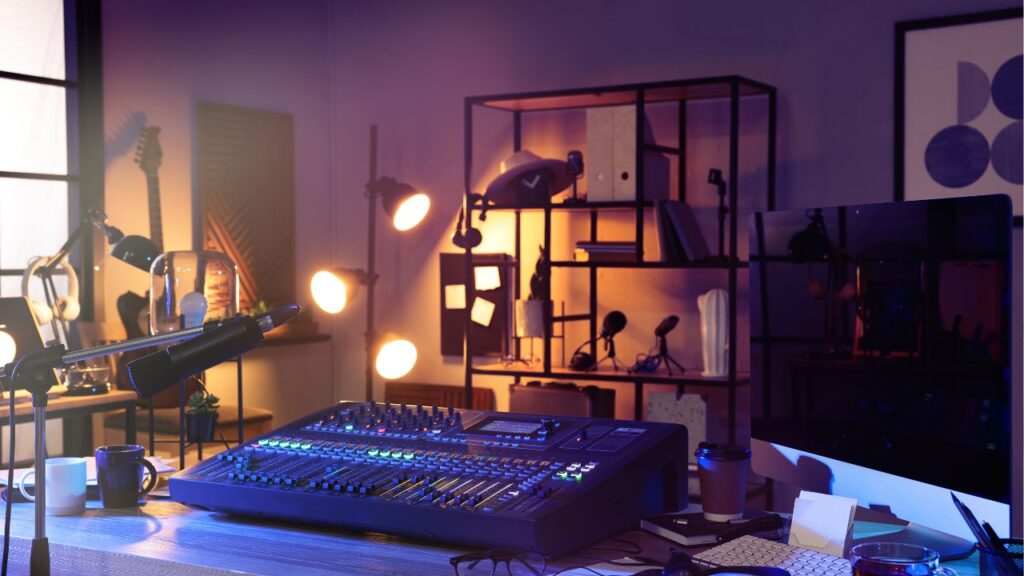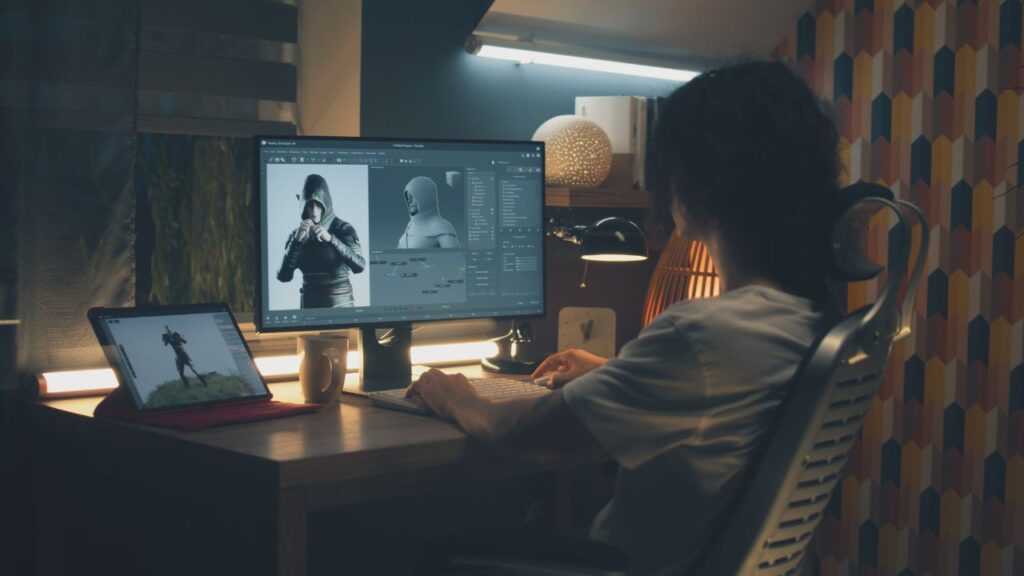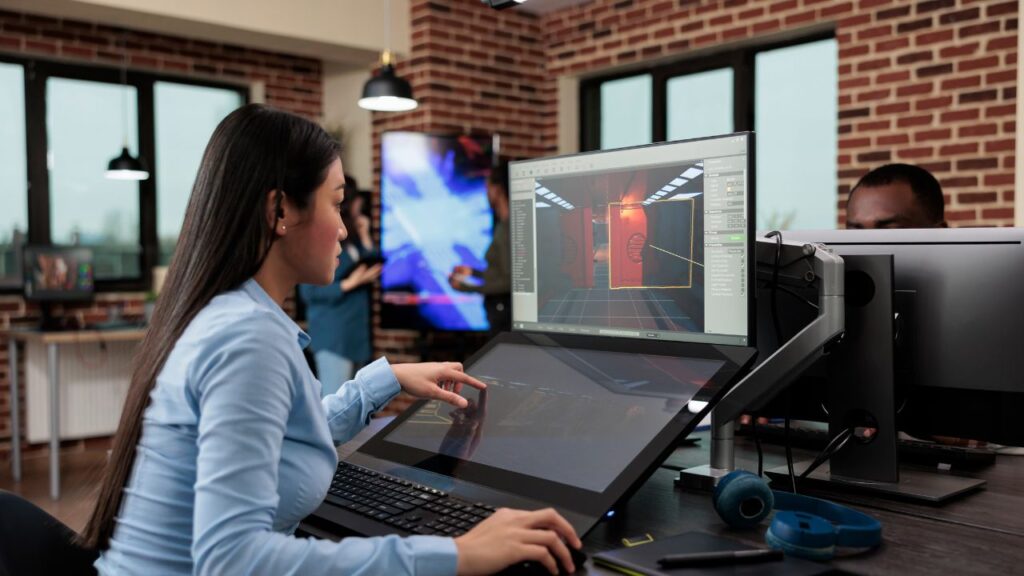Sound design can transform any creative project, but many people think they need expensive software to get started. Free sound design tools offer powerful features that rival paid programs, making professional-quality audio creation accessible to everyone. These tools let users create, edit, and manipulate audio for films, games, music, and other media without spending money on costly software.
The biggest challenge for new sound designers is finding the right tools that won’t break the bank. Many free options like Audacity, Audiotool, and other open-source programs provide everything needed to craft unique soundscapes and audio effects. These programs offer features like multi-track editing, sound synthesis, and audio manipulation that were once only available in premium software.
Learning sound design with free tools opens up endless creative possibilities. Whether someone wants to add atmosphere to a video project, create electronic music, or design custom sound effects, free software provides the foundation to explore and develop these skills. The key is knowing which tools to use and how to apply creative techniques that bring ideas to life.
Which Free Sound Design Tools Should You Start With?
Free sound design tools give beginners everything they need to create professional audio without spending money. The right software, plugins, and workflow setup can transform simple recordings into complex soundscapes.
What Essential Software and Plugins Do You Need?
Audacity stands out as the most popular free audio editor for beginners. It handles basic recording, editing, and mixing tasks with ease. The software works on Windows, Mac, and Linux computers.
Reaper offers a 60-day free trial and costs only $60 for personal use. Many sound designers consider it the best value for money. It supports unlimited tracks and includes built-in effects.
Free plugins expand your creative options without extra costs. Native Instruments provides several free synthesizers and effects. Their website offers regular downloads of sample packs and instruments.
VST plugins work with most audio software. Popular free options include:
- Helm for synthesizer sounds
- TAL-Reverb-4 for spacious effects
- OrilRiver for realistic room sounds
- Surge for complex electronic textures
These plugins create sounds that cost hundreds of dollars in paid versions. Download them from trusted developer websites to avoid malware.
How Should You Set Up Your Workflow?
Organize your files before starting any project. Create folders for raw recordings, processed sounds, and final exports. This system saves hours of searching later.
Sample rate matters for professional work. Set your projects to 48kHz for video work or 44.1kHz for music. Higher rates like 96kHz use more computer power without clear benefits.
Buffer size affects how your computer handles audio. Start with 512 samples for recording and 128 samples for mixing. Lower numbers reduce delay but require more processing power.
Backup your work regularly. Free cloud storage keeps your projects safe from computer crashes. Google Drive and Dropbox offer enough space for most sound design projects.
Why Choose These Popular Free Digital Audio Workstations?
GarageBand comes free with Mac computers. It includes built-in instruments and loops perfect for beginners. The interface feels familiar to iPhone users.
Audacity works best for simple editing tasks. Record voice-overs, clean up audio, and apply basic effects. It handles large files without slowing down older computers.
LMMS (Linux MultiMedia Studio) runs on any operating system. It focuses on electronic music creation with pattern-based sequencing. The learning curve is steeper but offers more creative control.
Waveform Free by Tracktion provides unlimited audio and MIDI tracks. It includes professional mixing tools and supports third-party plugins. The interface looks more complex than other free options.
Each program has strengths for different tasks. Try multiple options to find what works best for your projects and computer setup.
How Can You Create Amazing Sounds Without Expensive Gear?
Free tools give sound designers the power to build complex audio from simple recordings and basic synthesis. Smart layering techniques and budget processing methods can produce professional results without costly software.
What Makes Building Unique Sounds from Scratch So Effective?
Recording everyday objects creates the foundation for original sounds. A coffee mug tap becomes a percussion hit. Plastic bags turn into wind effects. The key is thinking beyond what objects normally sound like.
Pitch shifting transforms any recording into something new. Lower a voice recording by two octaves to create monster growls. Speed up metal scraping sounds to make sci-fi weapon effects.
Free synthesizers like Vital and Surge XT let creators build sounds from zero. Start with basic waveforms like sine or square waves. Add filters to shape the tone. Use envelopes to control how sounds start and stop.
Granular synthesis breaks audio into tiny pieces and rebuilds them. This technique works great for creating textures and atmospheric sounds. Many free tools include granular options.
Reverse audio creates unique attack sounds. Record a cymbal crash, flip it backwards, and layer it under the original. This adds mystery and depth to impact sounds.
Why Does Layering and Processing Audio Work So Well?
Combining multiple recordings creates rich, complex sounds. A single door slam might sound thin. Add a low-frequency rumble and some high-frequency crack sounds. Now it sounds powerful and full.
EQ shapes each layer to fit together. Cut low frequencies from high-pitched sounds. Remove muddy mid-range frequencies from bass elements. This prevents layers from fighting each other.
Compression glues layers together. Set a gentle ratio like 3:1 with medium attack times. This makes all the pieces feel like one cohesive sound instead of separate parts.
Reverb places sounds in space. Short reverbs make sounds feel close and tight. Long reverbs create distance and atmosphere. Free reverb plugins like Valhalla Supermassive offer excellent quality.
Distortion adds character and aggression. Light saturation warms up digital sounds. Heavy distortion creates industrial textures. Even free distortion plugins can dramatically change a sound’s personality.
How Can You Get Professional Results When Mixing and Mastering on a Budget?
Reference tracks guide the mixing process. Pick three songs in a similar style. Compare levels, brightness, and bass response. This helps creators understand what their mix should sound like.
High-pass filtering cleans up the low end. Remove frequencies below 80Hz from most sounds except bass and kick drums. This prevents mud and leaves room for important low-frequency elements.
Parallel processing adds punch without losing dynamics. Duplicate a track and compress it heavily. Blend the compressed version with the original. This technique works especially well on drums and vocals.
Automation creates movement and interest. Slowly increase reverb during quiet sections. Boost certain frequencies during climactic moments. Small changes keep listeners engaged throughout the piece.
Mastering chains should stay simple with free tools. Use EQ to balance the overall tone. Add light compression to control dynamics. Finish with a limiter to reach target loudness levels.



